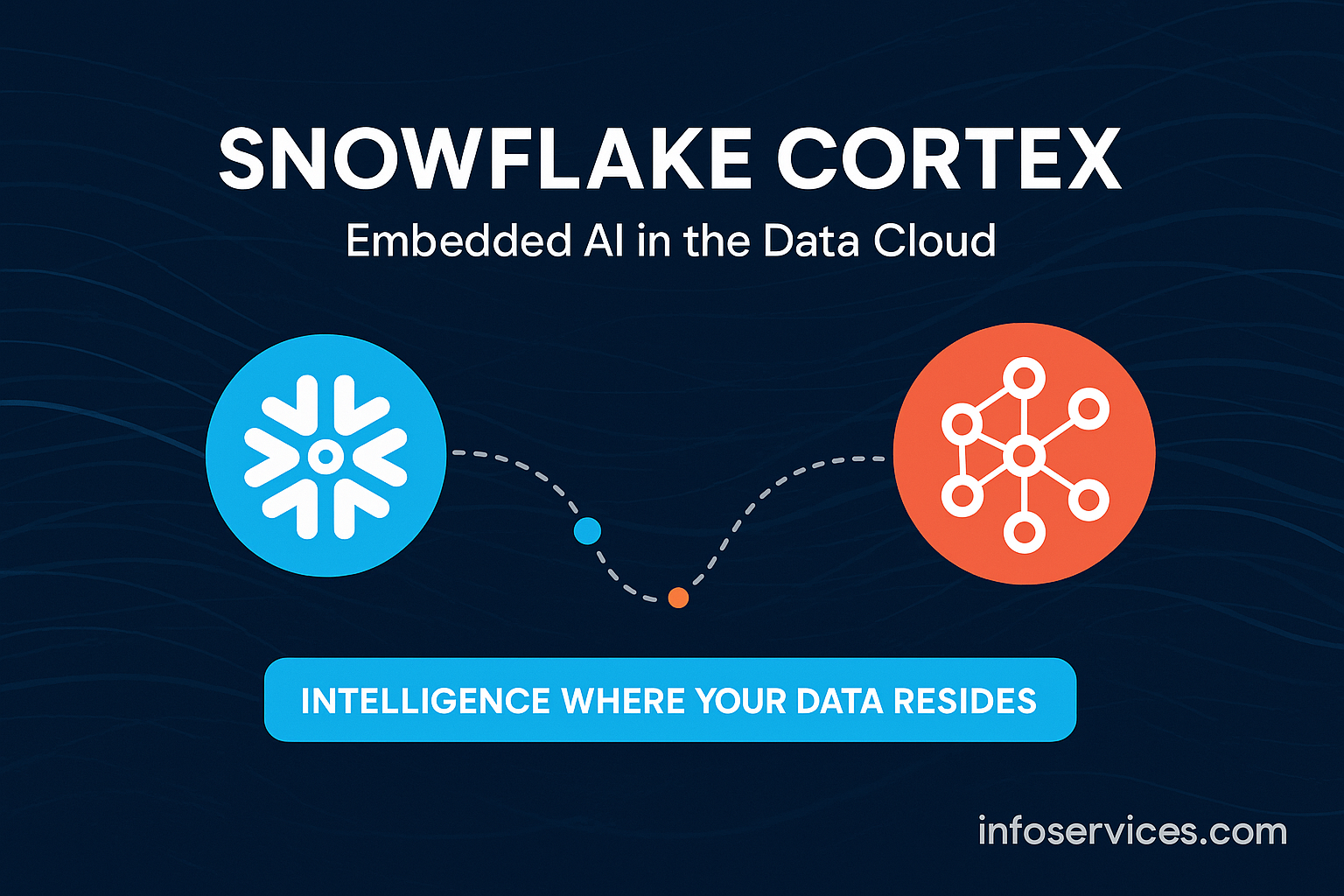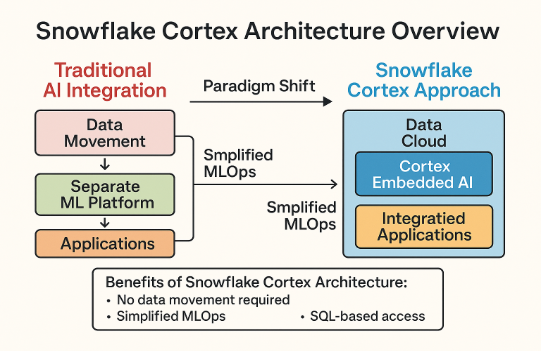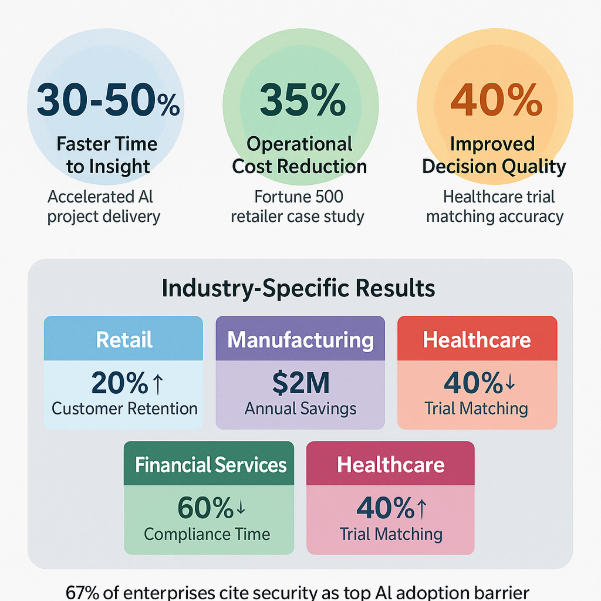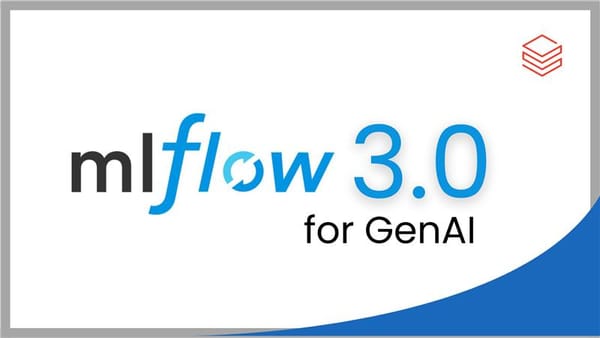Reimagining Enterprise AI: How Snowflake Cortex is Transforming Data Intelligence
Transforming Data Intelligence with Snowflake Cortex

As organizations scale their AI ambitions, they face a fundamental hurdle: integrating AI meaningfully with their data infrastructure. Traditional approaches often require managing separate ML platforms, moving data out of secure environments, or building complex APIs. Snowflake Cortex eliminates these barriers by embedding AI directly into the Snowflake Data Cloud.
With Cortex, the data doesn't need to move. Instead, intelligence comes to the data.
What is Snowflake Cortex?
Snowflake Cortex is a fully managed, enterprise-grade platform that brings generative AI and machine learning capabilities directly into the Snowflake Data Cloud. It empowers teams to analyze, generate, and interact with data using large language models (LLMs) — all without moving data or managing infrastructure.
Simplifying AI Integration with Snowflake Cortex
Traditional AI workflows often involve complex pipelines, external tools, and delays due to data movement and integration overhead. These challenges slow down innovation and increase operational costs.
Snowflake Cortex changes the game by embedding LLM capabilities directly within the Data Cloud. This means faster deployment, better governance, and no data duplication — all within a single, secure platform.
Here’s a quick comparison of traditional AI integration vs. Cortex:

The AI-Ready Data Platform
Snowflake has long been recognized for its ability to democratize access to cloud-scale data with near-infinite elasticity and performance. With Snowflake Cortex, the company extends that foundation into the realm of AI by embedding powerful, ready-to-use machine learning and large language models (LLMs) directly into the Data Cloud.
What makes this integration powerful is its simplicity. Snowflake Cortex allows developers, analysts, and data scientists to apply AI functions without managing infrastructure, tuning models, or moving data across platforms. This creates a frictionless environment where data and intelligence co-exist and evolve together.
According to a 2024 IDC report, 74% of enterprises believe their success in AI depends on their ability to integrate AI seamlessly into data platforms. Snowflake Cortex directly addresses this need.
How Cortex Fits into the Modern Data Stack
Snowflake Cortex is designed to fit directly into existing Snowflake workflows, which means teams can begin integrating AI capabilities with minimal disruption. Here's how:
1. Prebuilt LLM Functions Accessible via SQL
Cortex includes a library of large language model functions, such as CORTEX.SUMMARIZE(), CORTEX.TRANSLATE(), and CORTEX.COMPLETE(), that can be executed in standard SQL queries. This allows analysts and data engineers to embed natural language capabilities in dashboards, data pipelines, or batch processes without needing deep ML expertise.
Example: A marketing team can use CORTEX.SUMMARIZE() to generate executive-ready briefs from campaign data stored in Snowflake.

2. Secure Custom Model Hosting
Organizations can upload their own trained models using the Snowpark ML runtime, package them with Python or Java, and register them as User Defined Functions (UDFs). These models can then be invoked just like built-in Cortex functions, ensuring full control and privacy.
Example: A healthcare company can securely deploy a HIPAA-compliant disease risk prediction model and apply it to patient data in Snowflake without breaching compliance boundaries.
3. Integration with Vector Search for RAG
Cortex supports vector embedding and retrieval capabilities, enabling teams to implement Retrieval-Augmented Generation (RAG) workflows. This empowers intelligent document search, enterprise chatbots, and AI knowledge assistants across structured and unstructured data.
Example: A legal department can use Cortex to power a document review assistant that surfaces relevant contracts based on context-aware queries.

High-Impact Use Cases Across Industries
Snowflake Cortex, along with its technical capability, is a business accelerator. Below are some of the most transformative use cases by domain:
Retail
Retailers can use Cortex to combine time-series data, customer behavior, and natural language feedback to generate product demand forecasts, automate personalized recommendations, and summarize NPS survey responses.
Reported impact: 35% increase in forecast accuracy, 20% boost in customer retention (McKinsey Retail AI Insights, 2024).
Financial Services
Firms are using Cortex to automate policy summarization, generate compliance checklists, and score loan applications based on custom ML models—directly within the data cloud.
Healthcare & Life Sciences
Cortex supports cohort discovery, summarization of clinical notes, and scoring of patients for trial eligibility. The RAG feature is especially useful in parsing through large volumes of medical literature to generate insights.
Data shows a 40% improvement in trial participant matching and reduced time to diagnosis.
Manufacturing
By integrating AI models that evaluate equipment sensor data and inspection images, manufacturers can predict equipment failures, suggest corrective actions, and even generate service logs automatically.
One global auto manufacturer reported saving $2M annually through Cortex-powered maintenance optimization.
Content & Media
Media companies use Cortex to automate content summarization, sentiment classification, and even generate metadata and SEO tags for digital assets, significantly reducing manual workload.
Business Impact: Why It Matters
The integration of Cortex into Snowflake is more than a technical upgrade; it is a business catalyst. Here's why:
- Faster Time to Insight: Teams no longer need to build or maintain separate AI infrastructure. This leads to 30–50% faster AI project delivery times, as noted in early adopter case studies.
- Improved Decision-Making: By enabling real-time insights powered by AI, Cortex equips business leaders with timely and context-aware intelligence.
- Cost Efficiency: Organizations reduce data movement and minimize infrastructure overhead, optimizing their total cost of ownership.
One Fortune 500 retailer reported a 35% reduction in operational costs after deploying Cortex-powered demand forecasting across its supply chain.

The Cortex Developer Workflow
For technical teams, here's how a typical AI project lifecycle looks with Snowflake Cortex:
- Define the Objective
Start with a business use case, such as summarizing support tickets or flagging anomalous transactions. - Model Selection
Choose a built-in Cortex LLM or bring your own model. Pre-trained models include general-purpose and domain-specific options from partners like Meta AI, Mistral, and others. - Data Preparation
Use SQL, Snowpark, or Python UDFs to clean and shape your data. Cortex functions can be directly embedded in these pipelines. - Execution & Monitoring
Run the models as part of SQL workflows or schedule them via Tasks and Streams. Leverage built-in Snowflake observability tools for usage metrics and performance tracking. - Deployment & Iteration
Make results accessible via dashboards (e.g., Tableau, Power BI) or APIs. Continuously fine-tune the prompts, embeddings, or models for better accuracy.
Looking Ahead: Governance-Friendly AI
The future of data and AI is not about separate tools working in parallel, but about intelligent platforms that unify capabilities under one roof. Snowflake Cortex is a strong signal of this trend. As enterprises grapple with the dual demands of data scale and AI readiness, integrated platforms like Cortex will define the competitive edge.
Moreover, as regulatory frameworks evolve and governance requirements increase, having AI operate where the data resides enhances compliance and security—two pillars of sustainable innovation.
A Deloitte study from 2024 found that 67% of enterprises cite security and governance as top barriers to AI adoption. Cortex addresses these concerns through its native integration, fine-grained access controls, and governance tooling built into the Snowflake ecosystem.
Conclusion
Snowflake Cortex is a strategic shift toward intelligent data platforms that enable enterprises to move at the speed of thought. It's a bold leap toward a future where AI is no longer siloed from data, but deeply integrated into the way we work, decide, and innovate. By enabling intelligence to live where the data already resides, Cortex empowers teams to move faster, think bigger, and build smarter solutions, securely and at scale. The future of Data and AI is integrated, intelligent, and immediate. And with Cortex, it's already here!
Ready to transform your data into intelligent action? Contact Infoservices' Snowflake and AI experts today to discuss how we can help implement Snowflake Cortex in your organization. Our team specializes in enterprise AI integration and cloud data platforms to accelerate your journey to becoming an AI-powered business.
Frequently Asked Questions
How does Snowflake Cortex differ from traditional AI integration approaches?
Unlike traditional approaches that require moving data to separate ML platforms, Cortex brings AI capabilities directly to where your data resides in Snowflake. This eliminates data movement, reduces security risks, and accelerates time-to-insight by allowing teams to execute LLM functions directly through SQL queries.
Can I use my own custom models with Snowflake Cortex?
Yes, Snowflake Cortex enables secure custom model deployment through Snowpark ML runtime. Organizations can upload their trained models, package them with Python or Java, and register them as User Defined Functions (UDFs) that operate directly on data in Snowflake.
What types of LLM functions are available in Snowflake Cortex?
Cortex provides numerous built-in functions including CORTEX.SUMMARIZE(), CORTEX.TRANSLATE(), CORTEX.COMPLETE(), and vector embedding functions. These can be executed in standard SQL queries, making natural language processing capabilities accessible to analysts without deep ML expertise.
How does Snowflake Cortex handle data security and governance?
Cortex inherits Snowflake's robust security model, including role-based access controls, column-level security, and encryption. Since data doesn't leave the Snowflake environment, organizations maintain complete control over their information while applying AI capabilities, making it an exceptionally governance-friendly AI solution.
What is Retrieval-Augmented Generation (RAG) in Snowflake Cortex?
RAG in Snowflake Cortex combines vector search capabilities with LLMs to retrieve relevant information from your data before generating responses. This approach improves accuracy by grounding AI outputs in your enterprise data, enabling applications like intelligent document search, context-aware chatbots, and knowledge assistants.




